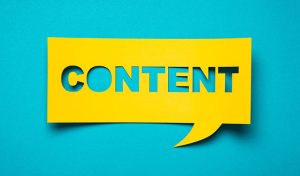In the world of email marketing, every click matters. Email marketing is a powerful tool that allows businesses to connect with their audience personally and directly. However, simply sending out emails isn’t enough.
In today’s competitive landscape, ensuring that your emails are not only opened but also clicked on is crucial, leading to valuable actions from your recipients. That’s where the email click-through rate (CTR) comes into play.
Email CTR is a key performance indicator (KPI) that measures the success of your email campaigns. It shows the percentage of recipients who clicked on one or more links within your email, indicating their engagement and interest. A higher CTR implies that your recipients are actively interacting with your content, which can lead to increased conversions, improved customer engagement, and, ultimately, better business results.
In this blog, we will explore ten effective ways to boost your email CTR and optimize your email marketing strategy. Whether you’re an email marketing specialist or just starting with email marketing, these tips will help you maximize the impact of your emails and drive better results.
From crafting compelling subject lines to optimizing email design, personalizing content, and more, we’ll dive into practical strategies you can implement immediately to improve your email CTR and achieve email marketing success.
Why is Email Click Through Rate So Important?
Email click-through rate is a crucial metric that holds significant importance in email marketing. It goes beyond being just a vanity metric and serves as a valuable indicator of the effectiveness of your email campaigns. A higher CTR signifies that your recipients are not only opening your emails but also taking action by clicking on the links within them.
When your subscribers click on the links in your emails, it indicates that they are actively interested in your content and willing to take the next step. This engagement can lead to many positive outcomes, such as increased website traffic, higher conversions, and improved customer loyalty.
In addition, email CTR is closely tied to the overall effectiveness of your email campaigns. A higher CTR implies that your emails resonate with your recipients and drive them toward the desired actions. This can result in improved campaign performance, better return on investment, and increased revenue. On the other hand, a low CTR may indicate that your emails are not engaging enough, and it’s time to reevaluate your email content, design, or targeting strategy.
Email CTR provides valuable insights into the preferences and behaviors of your recipients. By analyzing the links being clicked on and the content resonating the most, you can gather data on what interests your audience the most. This data can help you refine your email content, tailor your offers, and segment your audience for more personalized and targeted campaigns, leading to higher engagement and better results.
How Email Click-Through Rates Are Calculated
Calculating email click-through rates is a straightforward process. It involves dividing the number of unique clicks by the number of delivered emails and then multiplying by 100 to get a percentage. Unique clicks represent the total number of clicks on the links within your emails, excluding any duplicate clicks from the same recipient. On the other hand, Delivered emails represent the total number of successfully delivered emails.
For example, if your email campaign had 1,000 unique clicks and 10,000 delivered emails, you would calculate the CTR as (1,000/10,000) x 100 = 10%. This means that 10% of the recipients who received your email clicked on the links within the email.
It’s important to note that email CTR is typically expressed as a percentage to provide a standardized measurement that you can compare across different campaigns and industries. Monitoring and analyzing your email CTR can help you understand how engaging your email content is to your recipients and identify opportunities for optimization.
What is a Good Click Through Rate for Emails?
When determining a good click-through rate for emails, it’s important to consider several factors. Typically, CTR can vary depending on your industry, audience, and the type of email campaign you’re running. As a general benchmark, a CTR of around 2-5% is often considered good.
It’s crucial to track and analyze your email campaigns to determine what constitutes a good CTR for your specific goals and audience.
10 Ways to Improve Your Email CTR
Now that you better understand email click-through rates and how they work, we can start crafting the perfect emails that will get clicks and drive results for your business.
From crafting compelling subject lines to optimizing email design, personalizing content, and more, these tips will help you become an email marketing specialist and maximize the impact of your emails.
1. Craft Compelling Subject Lines
A compelling subject line is potentially the most important element in improving your email click-through rate. The subject line is the first impression your recipients have of your email, which can make or break their decision to open and engage with your message.
Well-crafted email marketing subject lines should grab attention, pique curiosity, and convey the value of your email content.
To create compelling subject lines, you must understand your audience and tailor your messages to their needs and interests. Consider using personalized subject lines with the recipient’s name or other relevant information. This can create a sense of familiarity and connection, increasing the likelihood of your email being opened.
In addition, consider using action-oriented language and words that evoke emotion. Use powerful words that create a sense of urgency, excitement, or curiosity, and avoid generic or spammy language that can be a turn-off. Experiment with different subject line formats, such as questions, lists, or emojis, to see what resonates best with your audience.
Remember that shorter email marketing subject lines tend to perform better. They are more likely to be fully displayed on mobile devices and avoid being cut off in the recipient’s inbox. However, ensure that your subject line accurately reflects the content of your email to prevent misleading or disappointing your recipients.
2. Create Engaging Content
Creating engaging content is essential to capturing and maintaining your recipients’ attention. When you craft the contents of the email, it should be relevant, valuable, and tailored to your recipients’ interests and needs.
Consider conducting research or surveys to understand your audience’s preferences, challenges, and interests, and use that insight to inform your content strategy. Use a conversational and friendly tone that resonates with your recipients and builds a connection. Keep your content concise, scannable, and visually appealing, using visuals and formatting techniques to enhance engagement.
3. Optimize Email Design for Readability and Visual Appeal
Optimizing your email design for readability and visual appeal is crucial for ensuring that your recipients open your emails and engage with the content inside. Start by choosing a clean and professional email template that aligns with your brand identity and provides a seamless user experience across devices like desktops, smartphones, and tablets. Consider using responsive design techniques to ensure your email looks great on all screen sizes and orientations.
Next, focus on the layout and formatting of your email. Use a single-column layout with ample white space to make your content easy to read and visually appealing. Avoid cluttered designs with too much text or images that can overwhelm your recipients. Use short paragraphs, bullet points, and headings to break your content into scannable and digestible chunks. Use a legible font with a font size that is easy to read on both desktop and mobile devices.
Incorporate visuals strategically to enhance your email’s visual appeal. Use high-quality images or videos relevant to your content and align with your brand image. Optimize your images for fast loading times, as slow-loading images can negatively impact your email’s performance. Use alt tags for your images to ensure they are accessible to recipients with images disabled in their email clients.
Finally, make sure that your email design is consistent with your brand identity. Use your brand colors, logo, and fonts consistently throughout your email to create a cohesive and recognizable look. Consistency in design helps build trust and familiarity with your recipients, leading to increased engagement and click-through rates.
4. Personalize Emails to Make Them More Relevant and Impactful
Personalizing emails can significantly improve email click-through rates. By addressing recipients by their name, including relevant information (such as their recent purchase history), and tailoring the content to their interests and preferences, personalized emails create a sense of connection and relevance for the recipient.
This level of personalization helps to establish trust, boosts engagement, and encourages recipients to take action, resulting in higher click-through rates. When recipients feel that the email is specifically crafted for them, they are more likely to open, read, and click on the email, leading to improved email performance and better results for the sender.
5. Segment Your Email List
Segmenting your email marketing lists can greatly improve click-through rates by allowing you to send targeted and relevant content to specific groups of subscribers. By dividing your email marketing lists into segments based on factors such as demographics, past purchase behavior, engagement history, or preferences, you can tailor your emails to each segment’s unique needs and interests.
This ensures that the content resonates with the recipients, as it is more personalized and aligned with their expectations. As a result, recipients are more likely to open, read, and click on emails that are relevant to them, leading to higher CTR.
6. Test and Optimize Email Send Times for Maximum Engagement
If you have a global or geographically diverse audience, it’s essential to consider time zones when optimizing email send times. Sending emails at the most convenient times for your recipients’ time zones can significantly impact engagement.
For instance, if your target audience is primarily located in different regions across the world, scheduling your emails to arrive during their daytime hours can lead to higher open and click-through rates.
Reviewing historical data from previous email campaigns can provide insights into when your audience has historically engaged the most with your emails.
Analyze past campaign performance metrics, such as open rates, click-through rates, and conversion rates, to identify patterns or trends in terms of the day of the week or time of day that have shown higher engagement rates. This data can serve as a starting point for optimizing your email send times.
7. Use Clear CTAs
Using a clear call to action is one of the most effective ways to improve your email engagement. Here are a few things to keep in mind when crafting your call to action:
- Make the CTA clear and visible: A clear CTA stands out in an email and is easy to understand at a glance. It should be visually prominent with a distinct design and clear text.
Avoid cluttering the CTA with unnecessary information or distractions that can confuse or overwhelm recipients. A clear and visible CTA makes it easy for recipients to identify and understand what action is expected of them, resulting in higher click-through rates.
- Use compelling and actionable language: The language used in your CTA should be compelling and actionable. It should clearly convey the value or benefit of clicking on the CTA and create a sense of urgency or motivation to take action.
Using action verbs such as “Shop Now,” “Download,” or “Subscribe” can prompt recipients to click on the CTA and complete the desired action. Avoid using generic or vague language that doesn’t clearly communicate the purpose or benefit of clicking on the CTA.
- Make sure the CTA is relevant and aligned with the email content: The CTA should be relevant and aligned with the content of the email. It should provide a clear and logical next step for recipients after reading the email.
For example, if your email promotes a specific product or service, the CTA should be related to that offer and lead recipients to a landing page or product page where they can purchase. When the CTA is directly related to the content of the email and aligns with recipients’ interests or needs, it can increase the likelihood of recipients clicking through and taking action.
8. Use A/B Testing to Experiment with Different Email Elements
A/B testing is a valuable tool for improving email click-through rates. By conducting A/B tests, you can compare different elements of your emails, such as subject lines, CTAs, design, and content, to determine what resonates best with your audience.
This allows you to make data-driven decisions and optimize your emails for maximum engagement. A/B testing enables you to identify the most effective strategies, tweak your email campaigns, and continually refine your approach to improve CTR and overall email performance.
9. Monitor and Analyze Email Performance
By regularly reviewing metrics such as open rates, click-through rates, conversion rates, and engagement rates, you can gain valuable insights into how your emails are performing and identify areas for improvement.
10. Continuously Optimize Your Email Strategy
As you monitor and analyze all of the metrics related to your email campaign, you can then go in and optimize and adjust various aspects of the campaign, such as email design, content, frequency, segmentation, send times, and CTAs.
By constantly monitoring and analyzing email performance metrics, conducting A/B tests, and reviewing customer feedback, you can identify areas that need improvement and implement changes to optimize your email strategy. This iterative approach allows you to fine-tune your emails, align them with your audience’s changing needs and preferences, and drive better engagement, higher click-through rates, and improved overall email campaign performance.
Elevate Your Email Marketing with Revity
The world of email marketing is complex, with numerous moving parts that need to come together seamlessly for a successful campaign. From crafting compelling email marketing subject lines to segmenting email marketing lists, there are many factors to consider. If you’re not an email marketing specialist, navigating this landscape and achieving desired results can be challenging.
That’s where Revity comes in. As an experienced and trusted email marketing solutions provider, we understand the intricacies of email campaigns and have the expertise to guide you toward success. Our team of skilled professionals knows how to craft emails that capture attention, engage readers, and drive action.
With Revity, you can have confidence in your email marketing efforts, knowing that you have a team of experts by your side. Don’t leave your email success to chance — trust Revity for your email marketing needs. Choose us as your strategic partner and take your email campaigns to new heights of success.
We’re not just an email marketing agency; we offer plenty of other marketing services as well. Contact us today using our online form or by calling us at 801-877-3362, and let’s talk about how we can help!





























